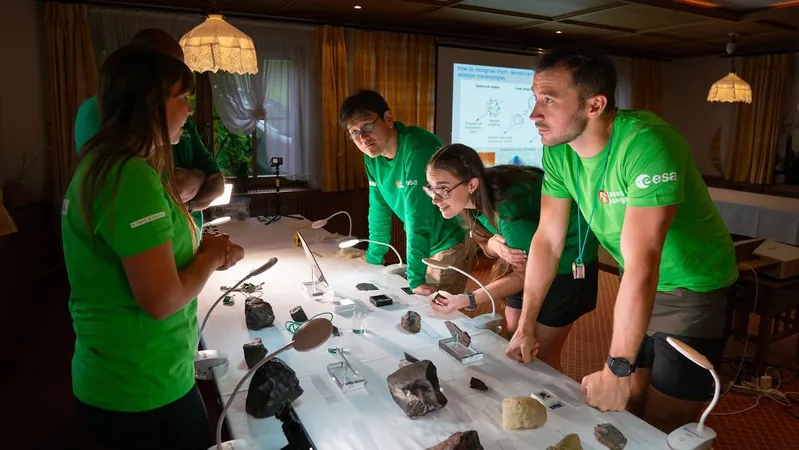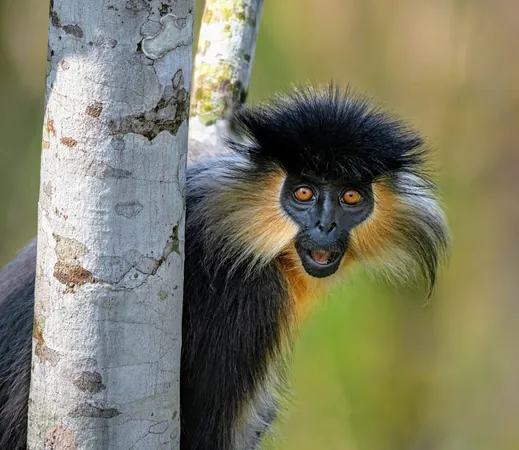
Unearthing Cosmic Secrets: ESA's PANGEA Training for Meteorite Identification
2024-09-20
The European Space Agency's (ESA) PANGEA program has embarked on a groundbreaking training initiative aimed at preparing astronauts to identify and analyze meteorites. With more than 75,000 meteorites discovered on our planet, predominantly in frigid Antarctica and arid African deserts, these space rocks are invaluable for unlocking the mysteries of our ancient Solar System.
Meteorites serve as vital messengers from outer space, offering crucial insights into the geology and formation of celestial bodies within our Solar System. According to Anna Barbaro, a leading researcher from Goethe University, Frankfurt, understanding the origins and composition of these extraterrestrial samples sheds light on our own cosmic narrative. "Meteorites are messengers from space that can give us important information about our origins and the evolution of our cosmic neighbourhood," she emphasizes.
As part of PANGEA's curriculum, astronauts participate in a blend of theoretical learning and practical exercises, whether in classrooms or the field. For many trainees, this program marks their first hands-on experience with materials that could one day be collected from the Moon or Mars. ESA astronaut Rosemary Coogan expressed her excitement, inquiring, "Are we allowed to touch them?"
During the training, astronauts interacted with a rich collection of meteorites curated from the Museum of Nature and Humankind in Padova, along with contributions from meteorite hunters Giorgio and Lina Tomelleri. They recounted the fascinating story of how they stumbled upon a Martian meteorite in the Libyan desert, weighing an impressive nearly two kilos. Throughout the training, astronauts learned to distinguish between meteorite types to ascertain their composition and origins.
"The astronauts kept asking questions to discover as much as they could about the history of the samples," says Barbaro. Astronauts trained in geology are equipped to compare rocks and assess their scientific significance. Matteo Massironi, a PANGAEA instructor and expert in planetary geology, noted the importance of curiosity: "Human curiosity and knowledge will make a difference when exploring the Moon."
With gloves on and magnifying glasses in hand, astronauts examined meteorite samples as forensic investigators would, scrutinizing shapes and surface scars for information about their journey to Earth. They also conducted mineralogical and chemical analyses, identifying over 300 distinct minerals commonly found in meteorites. Through spectral data, trainees could trace a meteorite's origin and determine if it had been altered during its impact on our planet.
This immersive introduction to meteorites seamlessly transitioned into focused sessions on impact craters, moving the team to the remarkable Ries crater in Bavaria, Germany. Created approximately 15 million years ago when a colossal asteroid struck Earth at a phenomenal speed, the crater stands as a stunning reminder of the power of celestial interactions. Its 25-kilometer diameter and 200-meter depth serve as testaments to the cataclysmic events that have shaped our planet’s surface.
The PANGEA training program embodies an exciting frontier in astronaut preparation, advancing both scientific knowledge and practical skills essential for future lunar and Martian exploration. As the ESA continues to cultivate a deeper understanding of these space rocks, the potential for new discoveries about our universe becomes ever more tangible. The journey to uncover the secrets of the cosmos begins with the first identification of a meteorite on distant terrains— a thrilling prospect that awaits our next generation of explorers.


 Brasil (PT)
Brasil (PT)
 Canada (EN)
Canada (EN)
 Chile (ES)
Chile (ES)
 España (ES)
España (ES)
 France (FR)
France (FR)
 Hong Kong (EN)
Hong Kong (EN)
 Italia (IT)
Italia (IT)
 日本 (JA)
日本 (JA)
 Magyarország (HU)
Magyarország (HU)
 Norge (NO)
Norge (NO)
 Polska (PL)
Polska (PL)
 Schweiz (DE)
Schweiz (DE)
 Singapore (EN)
Singapore (EN)
 Sverige (SV)
Sverige (SV)
 Suomi (FI)
Suomi (FI)
 Türkiye (TR)
Türkiye (TR)